Clouds 101/Sony NEX-5 User Report Part I


I have some unfortunate news to report on this project and total 100% transparency is how I feel this should be handled. My planned beneficiaries of this project, innocent very much in need children at a certain orphanage, have fallen victim to their local manager who we have found cannot currently be trusted and I doubt this is likely to change. Decisions need to be made if we're going to carry this project forward and if so who the new beneficiaries will be. I do expect this project to generate significant revenue so I take it very seriously. As you read this I'll be back in the Mae Sot area investigating further. I'll keep you informed. For now I'll still collect images with the intention of making the best most meaningful mosaics possible and as always, I'm asking for and will greatly appreciate your help with the images.
We are still accepting (and pleading for) images of children from SEA. No matter how terrible you think they are,
please send them in anyway. These images will be used to complete a set of 3 high quality mosaics which will be sold to benefit the Karen and Burmese Orphans living in the orphanages and refugee camps. The more images the better, I can use all
you have. Please take the time to go through your images for anything you think might help. If you missed the "No Place to Call Home" special, you can click on
the link and read more about this. Thank you! info@BangkokImages.com
Quick Click Links
Feature Photograph
Clouds 101 Sony NEX-5, a Hands-on User Experience
Photography News of Interest
Readers Submissions
Readers Questions A Snapshot of Bangkok Images Week in Review
Infocus Blog, The Quiet Confidence of a Professional "Expert."T
Feature Photograph *menu

Canon 5d Mark II, 24-70mm F2.8L @F8 1/320th 70mm ISO 100
More than a few times I’ve talked about being careful of what images you cull. Consider the future I warned. As your skill grows and perhaps more significantly as the software available to us improves, and improves in leaps and bounds it does,
the more likely we’ll be able to save a really nice image we would have otherwise culled.
During a recent workshop I was out at a place I’ve nicknamed “The Fishwat” in Suphanburi. It’s one of the many temples that protects a certain stretch of a river from fishing and allows visitors to feed the
fish and of course they raise funds by selling fish food. I noticed this nice scene and took a few frames thinking it would make a nice composition if only..

Canon 5d Mark II, 24-70mm F2.8L @F8 1/320th 70mm ISO 100
If only the power lines weren’t in the way. Obviously the heavy power cables so common everywhere in Thailand ruined the scene while the ropes were quite natural and added to the synergy of the composition. I looked around for a way to capture
this scene without the power lines in the way and realized it was impossible without hiring a boat.
And then I remembered a new feature I’d been learning to use in Adobe’s Photoshop CS5 called “Content Aware Fill”, a brand new technology employing advanced algorithms to evaluate the surrounding scene (from the selected area) and then ‘fills in’ what’s behind the area you selected. Remove a light pole and the software can accurately ‘guess’ what was behind the pole but not captured in the image, and fills in a natural
and like facsimile. Some might consider it magic, but it’s really just technology providing new and exciting tools we’ve never before had available.
This image is significant because it teaches or reminds us of three things. First, always consider the future before culling images. Second, always consider all available tools when evaluating a composition. And third, the reason some of us enjoy riding
the bleeding edge of technology and can’t wait to try the latest program or hardware updates.. is because often we’re rewarded such as I was in this image. Other times we just bleed. I’ve never been one to be afraid of a little
blood.. ;o)
Clouds 101 *menu
The Conversation
The conversation with one of my students always starts something like this: “Nice clouds don’t you think?” Yes, we don’t see such nice clouds that often. “Indeed we don’t, don’t forget to capture them for your cloud database.” Eh? Cloud database? And their surprised expression lets me know they haven’t yet been considering the future. Or maybe the past.

Canon 5d Mark II, 24-70mm F2.8L @F8 1/800th 42mm ISO 100
A Cloud Database
We really only get nice heavy rain swollen clouds in the Kingdown for one or maybe two months a year. The rest of the time we get either nice very barren but blue skies, or the more usual white blown our skies that ruin many a promising image. Wouldn’t
it be nice to have a small database of different cloud horizons and formations native to the area to replace those less than desirable skies? Most professionals maintain a cloud database just for this reason.

Canon 5d Mark II, 24-70mm F2.8L @F8 1/320th 38mm ISO 100
Perhaps they’ve been commissioned to provide a somewhat dramatic image of a new office building or home and the time of the year only allows the dismal and very average white blown out skies we’re so used to seeing. Instead of hiring a rain
maker and standing in front of the building for days on end waiting for clouds to form, you simply capture the image of the building as is and then replace the sky in post processing with a selection from your cloud database.
Capturing Clouds
Most people tend to overexpose skies in their quest to properly expose their main subject whether it be a personal portrait, a building, or even a mountain. The sky is sacrificed so the main subject can be properly exposed. We end up with either a totally
blown out white sky, or if we’re lucky and it’s the right time of day we’ll get lifeless clouds void of significant or dramatic detail.

Canon 5d Mark II, 24-70mm F2.8L @F8 1/800th 42mm ISO 100
However, if we exposed the exact same scene, but only for the sky, the image would yield a dramatic formation of clouds rich in both drama and detail. Which cloud formation would you rather have playing background for your main subject?

Canon 5d Mark II, 24-70mm F2.8L @F8 1/800th 42mm ISO 100
There are several ways of accomplishing a balanced scene between subject and sky so as to expose attractive cloud formations properly.
High Dynamic Range (HDR) Photography
HDR is very common now and my newest toy, the Sony NEX-5 even includes a mode that takes all the work (and fun) out of capturing an HDR image by automating the process. In essence you’re merely taking 2 or more exposures of the same scene and then combining the tones using a HDR processing program such asthe excellent Photomatix such as we’ve demonstrated in past articles such as our first HDR tutorial here or the sequel tutorial here or the third tutorial here.
Blending
Blending is a bit like HDR except you’re merely laying one image taken at one exposure over another image taken at another exposure, and then using your eraser to remove the parts of the exposure you don’t want in the image. This is a bit time consuming but there are programs like Photomatix which automate the process considerably.
Neutral Density Filters
You buy these in sets, usually of 1, 2, and 3 stops and then you can combine them as necessary. These are filters with nothing on the bottom half, and that block the light 1, 2, or 3 stops on the other half. It takes a bit of practice to use these correctly and learn where to put that transition area in the frame, but a ND filter set is part of every experienced photographers toolbox.
Subject and Sky Examples
As you build your cloud database the sky becomes the focus more than the horizon, but you still should capture a part of the horizon which might help you in the future.

Canon 5d Mark II, 24-70mm F2.8L @F8 1/400th 63mm ISO 100
The image above has a very powerful dramatic cloud formation and the land mass is roughly 2 stops underexposed.

Canon 5d Mark II, 24-70mm F2.8L @F8 1/320th 64mm ISO 100
In this image you can practically feel the clouds looming from the very end of the horizon to right over the top of you. Notice the many details in a properly exposed cloud formation? And also notice the exposure will vary from overexposed in the least
dense part of the formation, to underexposed in the most dense part of the formation where the clouds are swollen with rain. You might want to bracket such skies so when you need a cloud formation from your cloud database you can tailor the look
you’re after.

Canon 5d Mark II, 24-70mm F2.8L @F8 1/320th 34mm ISO 100
This image imparts a powerful feeling of a pending storm. The land mass is roughly 1 stop underexposed. This image like the ones above were captured without HDR, Blending, or ND filters because my focus was on the clouds themselves so this is where I
metered my exposure.
Conclusion
So far we’ve concentrated on two things.
Making cloud captures to be used in a composite image at a later time and this takes little time or effort as you’re out in the natural course of enjoying photography. If you see a nice cloud formation or any unusual sky, capture it for possible
future use. Expose only for the sky to capture maximum cloud detail and dynamic range.
If the sky and the land mass or subject require two different exposures, we have three main tools to bring them into balance either before or after the exposure. ND filters during exposure, and then HDR and Blending processing for after the exposure.
However, sometimes the weather cooperates and we get a perfect well balanced exposure where the sky and landscape are both ideally exposed.

Canon 5d Mark II, 24-70mm F2.8L @F2.8 1/3200th 25mm ISO 100
Bonus Section
The above image is a nice example of this cooperation. Would it interest you to know that this capture was made remotely? Yes, the camera was on a tripod, pre-framed, and a long USB cable ran from the camera to the ThinkPad laptop I recently reviewed.
As we sat comfortably in the truck with the laptop between myself and my workshop student the rain gently fell as we selected the ideal ISO, shutter speed, aperture, and focus (from the computer we controlled the camera) via a program
I’m currently reviewing and will bring to you later.
The tripod had ballast attached and was well protected as were we inside the vehicle and out of the weather. A bit much if this was just for a single shot.. but ideal if we were learning time lapse, focus bracketing, and exposure bracketing techniques
and shooting the same. We hope to bring you a full review and tutorial of these techniques soon.
Sony NEX-5 User Report Part I *menu
I've wanted a small pocket sized digital camera that produces DSLR like image quality for a long time and I've watched with interest as the Micro 4/3rd’s systems hit the market and I've used/tested most of them. Frankly I didn't
get that excited about the image quality from these but the concept and portability intrigued me.

You have choices of black, silver, or red
I use large DSLRs when I work, but when traveling around the city (Bangkok) I wanted something light enough to carry in my knapsack so I really wouldn't notice it's weight or bulk. In the past there's been a steady stream of point and shoots
in my knapsack from the Fuji fd30/f31, Canon G9/11, Fuji f200exr, and the quest continued. I'd use these cameras less and less for anything other than snaps with friends. If I saw a scene, a break in weather, a prime photo-op.. it had to
be really good to motivate me to take the time with one of these cameras and then suffer through the limited image quality.
This has changed with the NEX-5/18-55 kit. I had one of the first 100 previewed here (weeks before it arrived in the states or EU) and while it's not perfect.. it does produce much better image quality than anything else in its class
and on par with the average APC-S DSLR.
I remain a bit confused about some of the comments from the reviewers. Some things were just flat wrong and others exaggerated. I can easily change my settings in Av or Tv or M modes with the turn or a dial or perhaps a push of the button and they are
visible 100% of the time if you set the camera that way. ISO settings remain a few button pushes away but I don't find this that big a deal for a serious capture, the rest of the time Auto ISO suffices for fun and snap purposes.
I find the 18-55 lens on par and in fact better than the average mid-range zoom for DSLRs but not as good as the top AFS or L zooms for my Nikon or Canons. It's silky smooth and feels very precision made and you can't help but get super sharp
results if you use it right.
The LCD is beautiful.. but I think the numbers/text could be larger and easier to see.. this should be adjustable.

The articulating screen is extremely useful for candid shots
The articulating LCD and small size makes candid captures both fun and possible where viewfinder use would not. I long for a EVF (electronic view finder) attachment for serious capture, but the more I use the articulating LCD the less the longing.
Software sucks. I can't wait for LR3 or ACR to support the RAW.. it's a major PIA to use the included Sony software.. but this is an issue with any new camera. If you get one of the first ones you end up waiting a small period until the software
updates are released.
The movie mode for 'fun/personal' use is great. I'm not and never will be a serious videographer and when I must do serious video I use my Canon 5d Mark II for that.. but for personal use it's great. The "sweep panorama" is also heaps of fun, and the images interesting.. but it does take some work to get really good image quality and you'd expect from how this mode is used.
I'd say.. if you're not already invested in the Micro 4/3rd’s genre.. and want a small portable camera with DSLR like image quality then the NEX-5 is worthy of serious consideration. I personally find it a no-brainer. Will a NEX-7 be
better? Without a doubt.. and so will the new Canon 1ds4 when it's released.. but until then my NEX-5 and 1ds2/5d2/1d4… they all take the same pictures with the same image quality they always have.

A full size APC-S sensor just like in most DSLRs
And maybe I shouldn't say this.. but I see the NEX-5 as "disposable" as I do my point and shoots. I'll get my $700 worth of enjoyment out of it before I pass it on to a son or relative, or maybe I'll keep a lens
for the model that replaces it.. dunno.. but I'm not going to fret over the relatively low cost of this particular camera for the utility and fun its providing. I have a room full of old P&S's and DSLRs that bother me far more..

The red color isn't for me, but maybe the lady in your life?
Here are a few images from my new NEX-5. I’ll bring you Part II of the user report next week with more detailed information and some example images geared towards showing different features. To be clear, I like this camera very much and I now carry
it everywhere when not working and using my large DSLRs.

Sony NEX-5 Av mode, F5.6 1/100th 27mm ISO 100
This image of my son playing pool was one of the first 2-3 images from the camera. The very small, even tiny, included flash did a good job of correctly exposing the scene.

Sony NEX-5 Av mode, F5.6 1/50th 30mm ISO 250
The light transitions of this shot show off the dynamic range and low light capabilities of the NEX-5.

Sony NEX-5 Av mode, F4.5 1/60th 36mm ISO 1250
Shot inside the bar with no flash and all natural light the image is clear and noise free besides being shot at a higher ISO of 1250.

Sony NEX-5 Av mode, F3.5 1/60th 18mm ISO 800
What if you wanted a wider shot of the bar but all you had was the 18-55mm lens with you, which at 18mm is a 27mm equivalent? No problem, put the camera in “sweep panorama” mode and hold down the shutter button while moving it by hand across
the room. The NEX-5 automatically (instantly really) takes 5-8 images, stitches them together, and produces a 8000 pixel wide panoramic.

Sony NEX-5 Av mode, F8 1/80th 44mm ISO 500
A boring shot when I was documenting a repair on my PC. What you’re looking at there is a bare i7-920 CPU. You’re not sure or you can’t read the print, not sure just how sharp this kit lens is? Look at the crop below.

Sony NEX-5 Av mode, F8 1/80th 44mm ISO 500
This lens is TACK sharp and easy to use to make such sharp images. The print you’re reading is magnifying glass small.. zoomed in several times.. yet as clear as can be. Heck, you can even these much of the metal structure.
Part II next week. We’ll cover the camera in much more detail then!
Photography News of Interest *menu
100 pictures to take before you die from www.AskMen.com Many interesting places. How many have you covered?

The Sony NEX-3 and NEX-5 is becoming popular very quickly and for good reason, but small issues are being noticed by reviewers and Sony is quick to respond with this first firmware upgrade.

Nikon’s 2010-2011 International Photo Contest is taking applications. Do you have what
it takes?

The Canon EOS T2i replaces the excellent and popular T1i but is it a worthy successor? Is it everything the T1i was and more? Read Imaging Resources excellent review with sample images and see for yourself. I suspect this model may be even a bigger seller than the first!

A 16-28mm F2.8 zoom? What the.. Tokina announces this new animal for Nikon and Canon giving a lower cost alternative to
consumers not quite ready to spring for the AFS and L glass of their respective manufacturers. I can’t wait for the first review to see if this is a worthy consideration or not.

Adobe announces a significant upgrade to CS5 Photoshop. This incremental upgrade fixes many
small issues with tools and features and you’ll want to install it immediately.

Folks you can’t make this stuff up. George Michael driving back from a gay pride parade crashed his Range Rover into the front of a Snappy Snaps photo shop while obvious impaired in some way. Perhaps the excitement was too much for him?

How many times have I told you it’s not so much the camera that counts? Or that professionals routinely use inexpensive DSLRs for wedding and portrait photography? The guys over at fstoppers.com wanted to prove the same point by taking great photos of models using the worst camera known the mainkind.. the IPhone. You’ve probably gotta hold it just right though.. Check out their pictures and the video showing their shoot.
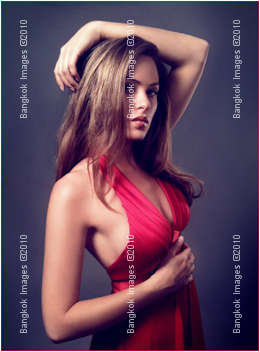
Readers Submissions *menu
Steve:
A few pictures from last weeks visit to Yellowstone Park. A fun 5 day trip with snow, rain, sun and great colors everywhere. We took over 1200 pictures and have spent the last week sorting them into about 450 keepers for our video scrap book using CyberLink Power Director 8.
I tried to do a little more composing with each photo using advise from your news letter each week.
The Paint Pots are a real sight to see and photograph. All colors of a rainbow showing above the steam, in the water and in the bottoms of the pots.
A few fun shots are included to make the wife smile.
Rickster








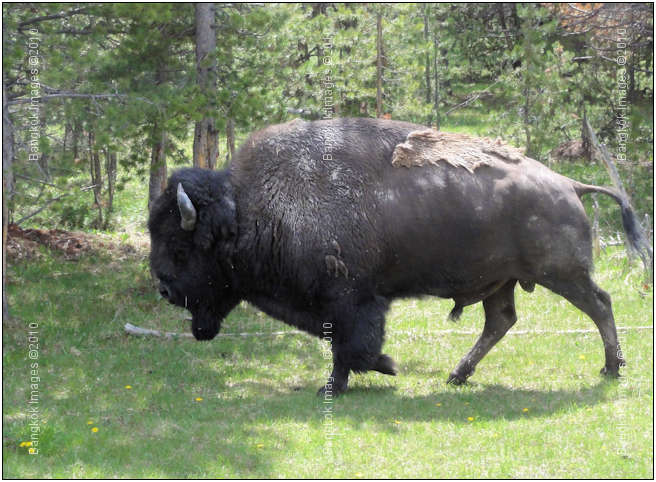
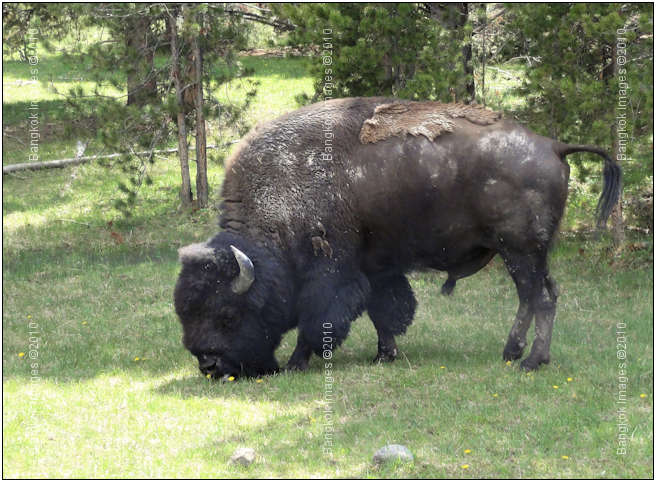
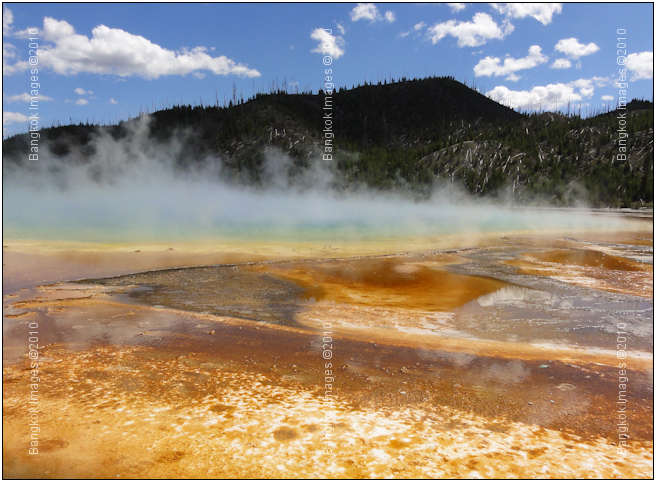
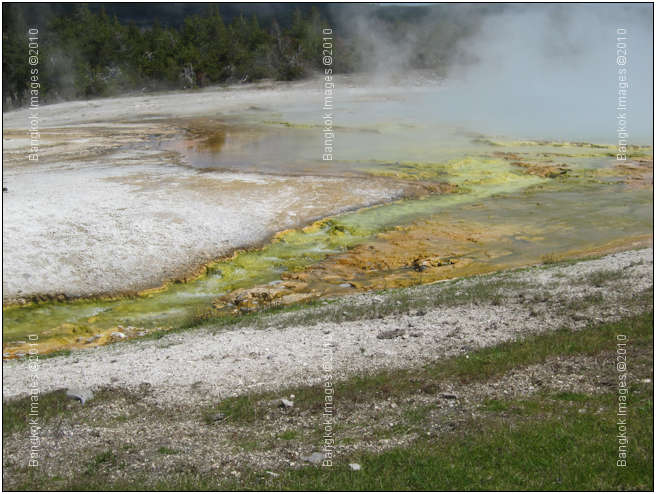
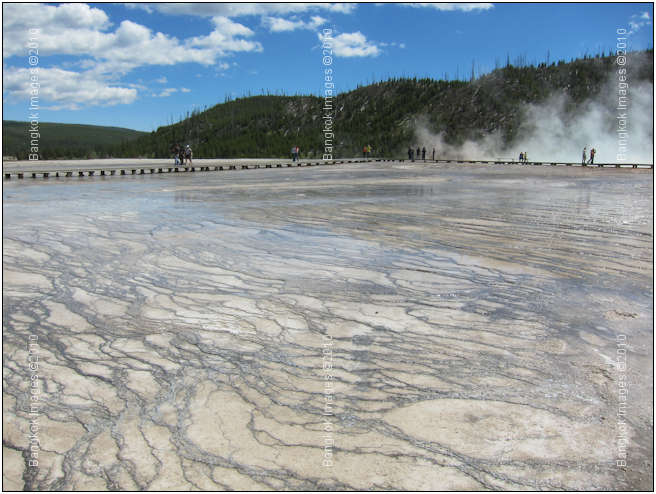
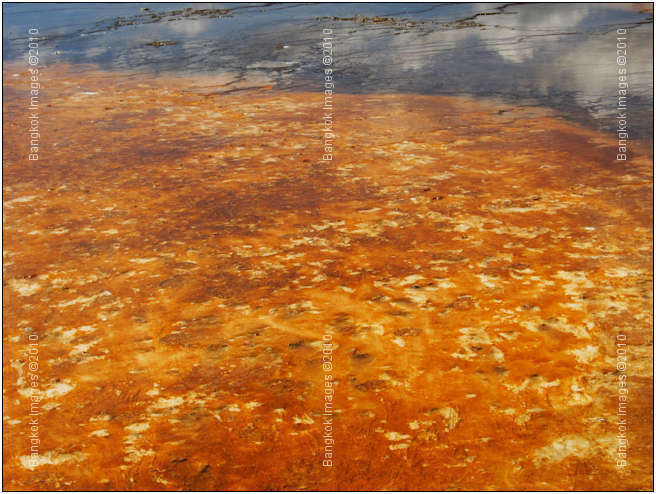
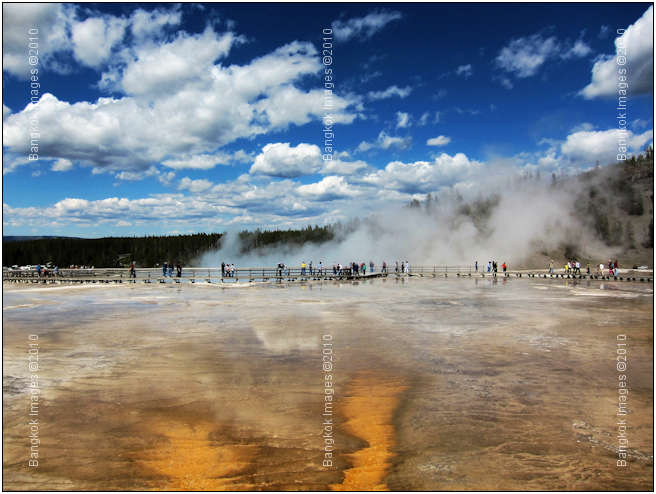
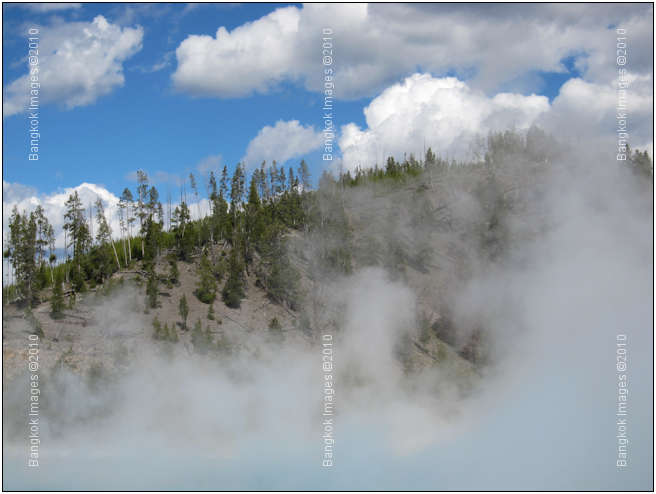
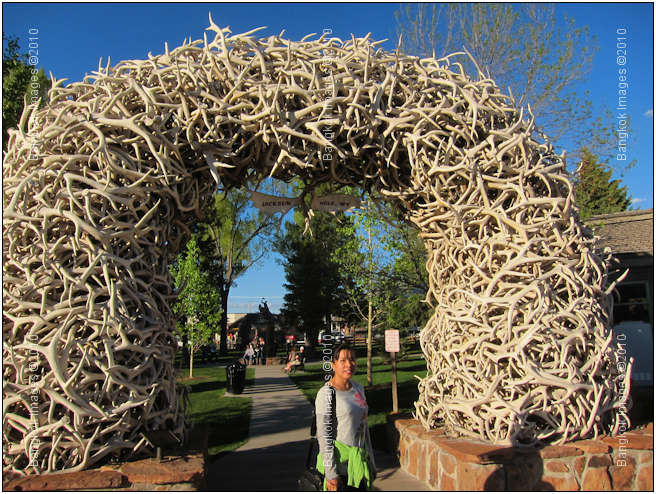
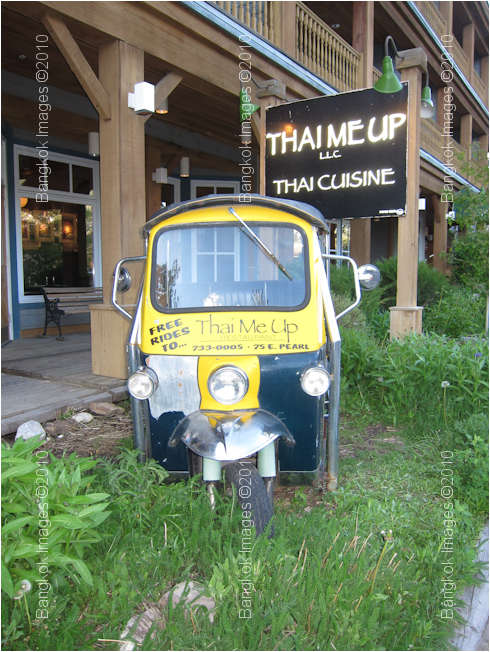
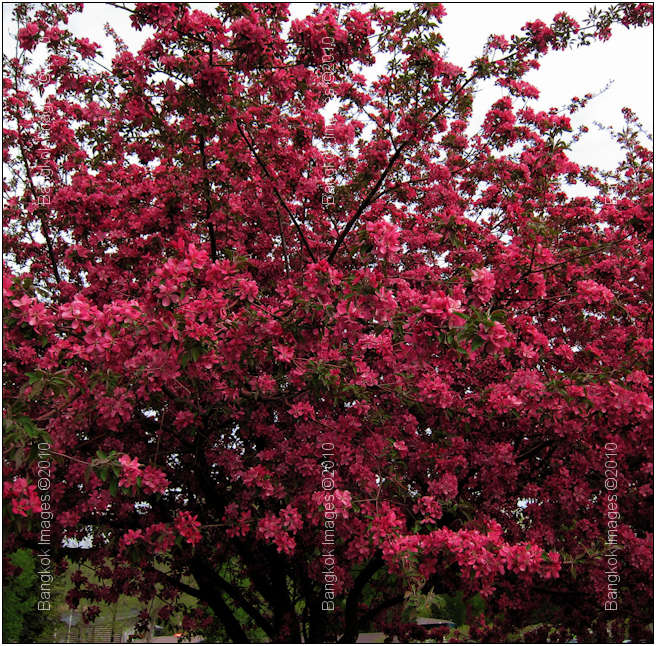
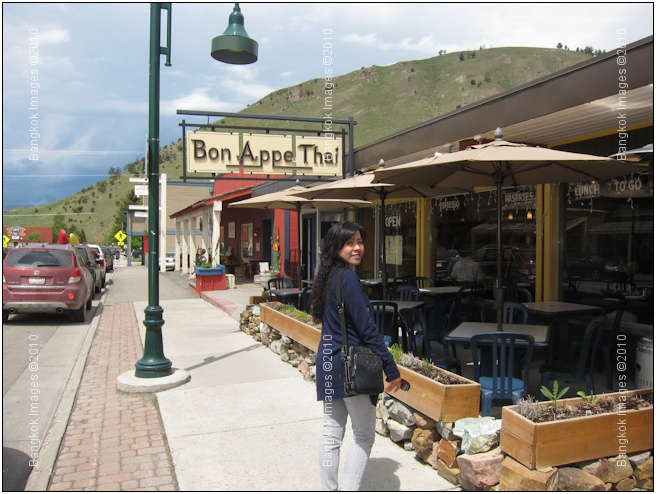
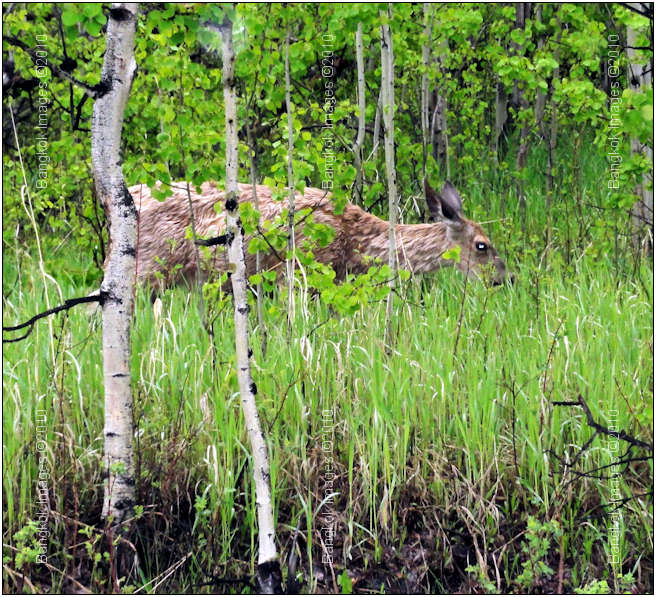
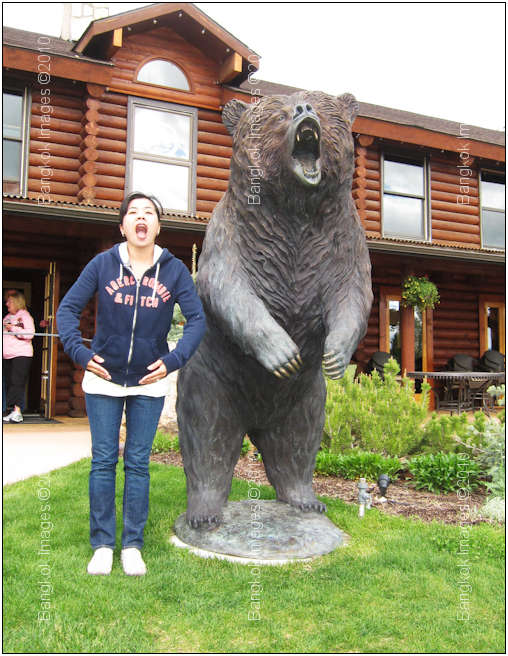
Rick –
Nice shots! Fun pics of your wife as well! This is great and exactly why digital photography is such a great capability to have. Nice shots and well documented. I look forward to more!
Steve
I suspect the readers submissions will be a highly anticipated section of this column and I encourage anyone with photographs and travel accounts they'd like to share to please send them to me at: info@BangkokImages.com
Readers Questions *menu
BKKSteve;
I’m going to be building a new PC soon and while I was in Panthip Plaza I noticed there was a huge number of cases. What do you look for in a case? Is it purely about looks or do some cases work better than others?
Thank you. I’ll have more questions soon, the more I research building my own PC the more choices I realize there are to be made.
Phil.
Phil –
Timely question. I helped a client build a custom machine just last week geared towards fast image processing. Cases of course came up. As we walked through Panthip ourselves we noticed literally hundreds of cases in all price categories. Here is what
I told him:
- The case should first and foremost be designed to keep things cool. Airflow is key.
- The case should be quiet, fans should be quiet, mounting points rubberized, and construction sound to minimize vibrations.
- Power supply on top or bottom? I prefer the bottom as the newest power supplies have large quiet fans mounted on the bottom to pull air up through the bottom of the case.. so the case should have a matching vent.
- Toolless construction. Ideally you should be able to put it together with no tools or maybe a single screwdriver.
- Finish. Not only should the exterior of the case be well finished, but the interior should have no sharp edges or exposed points to cut your hands open.
- Material. Steel is heavy and still usually has sharp edges. Aluminum can way ¼ of the weight of steel and be finished with no sharp edges.
- All fans should have a filter as should all air intakes to keep dust in the filters and not inside the PC.
- The case should of course be able to mount as many drives as you prefer, the motherboard of your choice, the number of desired video cards, a pro sized power supply, and it should have the minimum number of switches and ports.
- The recent trend it towards clear window sides, fancy neon lights, and other “gamer” looks that frankly I’m just not interested in.
- Options. Lockable hot swappable drive bays, flash drives, and much more. Any options you want should be available from a quality case maker.
Cases can and should be an investment. You can easily buy a $30 dollar case but by the time you get done building the machine your hands will be in shreds, it will probably overheat from lack of good air flow, and you’ll have had one heck of a
time getting things to fit where they should fit.
I used the same tower case for the last ten years, and every time I upgraded I’d put in a new motherboard, maybe some new drives or new power supply as needed. A quality case will last you 10 or more years and you won’t have any reason to
replace it when upgrading your system unless you just plain get bored with it.
This case, and my new case, both came from the Cadillac of case builders, Lian Li out of Taiwan. These have the same reputation in the PC industry that a Mercedes has in the auto
industry. They’re all aluminum, toolless, excellent airflow, and everything fits where it should fit. I’ve looked, but never found a better case. Lian Li builds many case types from professional server cases to lightweight enthusiast
cases and they all share the same exceptional quality.
I hope this helps. I’ll bring you a review of a Lian Li case with photos in the near future.
Steve
Please submit your questions to info@BangkokImages.com All questions will be answered and most will show up in the weekly column.
A Snapshot of Bangkok Images Week in Review *menu

Another quiet week during my sons summer visit. No shoots, only one workshop, and not much of anything except work on the website, testing review products, and a few computer repairs.
We found some interesting issues concerning power and mysterious reboots and memory quality vs. overclocking limits and some overheating issues traced to poor thermal compound. Some of these things I’ll share (with pictures of course) because it might help you in the future if you run across the same thing.
We continue to test a bunch of new gear including NEC wide gamut image monitors, a new colorimeter, a Color Checker Passport, Android smart phone, Sony NEX-5 camera, and more. Software too! Adobe CS5, Topaz, PTIgui, and the new Office Professional 2010.
We have a lot of work ahead of us.
Reader gallery of the week is by Mohanbhaya. Nice gallery! Post your gallery to
share and we'll link it here for all to enjoy!
Infocus Blog, The Quiet Confidence of A Professional “Expert.” *menu
I’ve worked with ‘experts’ in many fields most of my adult life as most of you have I’m sure. As I read the major photography blogs, forum discussions, testing sites, critique sites, etc, etc, you’d
have to be blind to not notice the plethora of different opinions surrounding the same issues/topics/equipment/images. All from professional experts.
Can all these ‘different’ opinions be right? If not, can they still be professional experts? The answer to both questions is a resounding YES and the mindset which
allows this answer, to me, defines the very essence of the “confidence” of a professional expert. In other words the realization you “don’t know it all.”
Don’t get me wrong, there is a huge difference between having a solid opinion and supporting it in a public forum, or many such opinions born from experience or skill and equally supported (what most inaccurately call a “know it all” when in fact they should be saying “knowledgeable.”),
and thinking it’s the only opinion that counts, or will work, or is the ultimate truth about such matters. THAT defines a ‘know it all’ and it also exposes weakness in character, people skills, and the quiet confidence
of a real expert.
I can’t count the number of times a client taking one of my workshop gives me a quizzical look when I reply to one of their questions “I don’t know, but I’ll find out and get back to you later in the course.” “WHAT?” they’re thinking, “I’m paying you to be an expert in the field of photography and you don’t know this simple question?”
There would be a few different ways I ‘could’ respond to a question I don’t know. I’m sure you can fill in more than a few from your own experiences both negative and positive.
You see, a ‘real’ expert realizes they can’t know everything and this is one of the lessons I try to teach my clients. It’s not necessary to know everything. Its only necessary to know you don’t know
everything, so when faced with a task or challenge you’ll know it’s okay to not know everything and be able to move past that.. and then you're free pursue the answer in one of the many ways possible.
That question the client asked? It’s important to them. I might not understand why they asked that particular question at that particular point in time.. but they do. It might help fill in a blank in their knowledge, connect some dot to the topic
we’re currently discussing, or any number of things. A good teacher and someone with even a modicum of people skills will understand this and answer the question if they know, or promise to get back with the answer if they don’t.
AND in the process make the questioner feel good about asking. After all, there are no stupid questions. Only stupid reactions.
Until next time..



